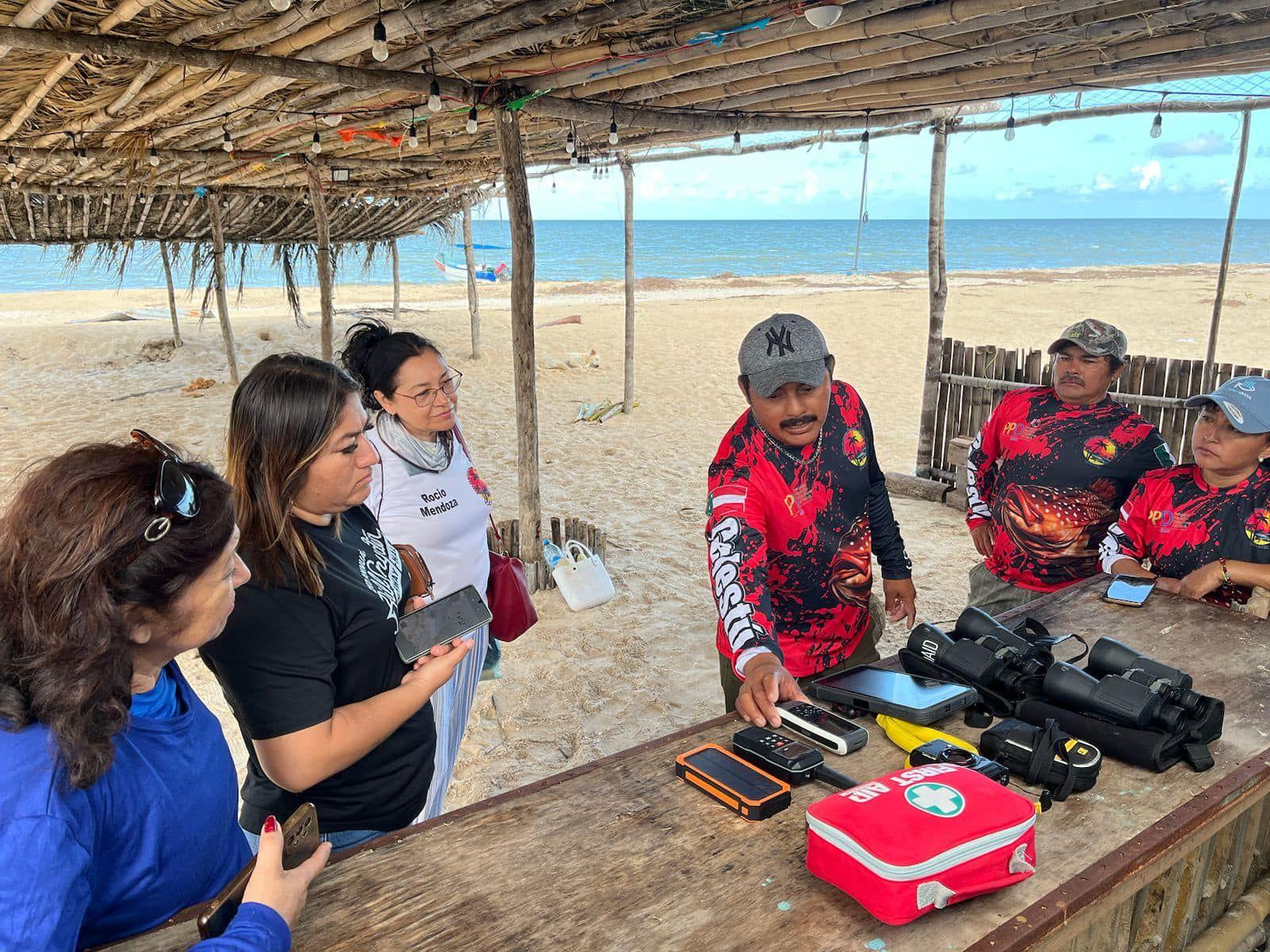To prevent poaching from affecting their conservation efforts, fishermen at the Celestún refuge in Yucatán are turning to community surveillance. An activity that began with rounds carried out exclusively by men, but which today includes 10 women who make up half of the commission.
The Celestún fishing refuge area was declared in 2019 for the protection of species such as sea cucumber, Mayan octopus, red grouper and lobster. In six years, fishermen and allied organizations report women's voluntary involvement in conservation activities.
This integration was formalized last year. For several of them, this is the first time they have participated in fishermen's spaces. “It's something great, something new,” says Reina Dzul, one of the members of community surveillance.
She is originally from Celestún, grew up in a fishing family and married a fisherman. So when the shelter was decreed, he did not hesitate to join the environmental education workshops, in which he still participates through talks in elementary schools.
Recently, Dzul went on surveillance tours. “It worked out quite well for us. Sometimes there are those who get on us (poachers), but we explain to them to raise awareness, to take care of the area, that they can fish on the other hand,” he says.
The community surveillance group takes four tours a month on average. The purpose is to detect fishermen who may violate shelter regulations such as fishing in areas that are not allowed. They also monitor that the allowed catches are by hand, respecting the sizes and fishing gears indicated by law.
In the process, they have received training on inspection and surveillance tasks with the Kanan Kay Alliance, an initiative that supports the creation of fishing refuge areas for the restoration of fisheries. It was through one of these trainings that the women of Celestún were integrated.
“With regard to surveillance, we rotated our points. When we go out, I have to write down what the coordinates are, the license plate numbers, the engine, things like that for reporting,” says Dámaris Chuil, another woman who participates in the surveillance.
Some of the workshops, Chuil says, focus on how to address poachers and how to deal with risks. “On some occasions I have felt a risk, but it depends on how we see the situation turning out to take due care,” he says.
Although community surveillance seeks to prevent poaching, it does not replace the obligations of competent authorities such as the National Aquaculture and Fisheries Commission (Conapesca) and the Secretariat of the Navy.
“When we find them (the poachers), we make them aware that their children need to know life at sea. That what he is feeding us today, not in the future. If we run out of it, what are our children going to have to work with?” , explains Reina Dzul.
The women who are currently part of the surveillance agree that the integration of other colleagues would be positive. They also highlight that more resources are needed for the fishing sector to continue with conservation work.
“I do see myself staying in the fishing shelter and under surveillance and in everything I can support because we have had a very good participation and we want the general population to be aware of that, to understand it and to join us”, concludes Dzul.






Comentarios (0)